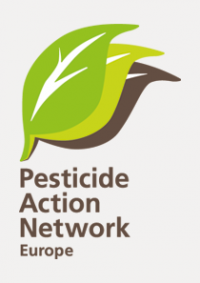The EU makes exceptions for the use of very toxic pesticides in greenhouses. To do this they presume these are closed places, with no release of pesticides into the environment. This report shows that greenhouses are not closed systems. They do leak toxic substances into the environment. We tested rain and surface water samples for greenhouse areas in Belgium, Germany, The Netherlands and Spain. The results are alarming: we found 62 different pesticide residues. We found a cocktail of up to 35 pesticide residues in a single sample. These residues often exceeded the proposed EU water standard many times over.
The EU Regulation (EC) 1107/2009 defines greenhouses as “a walk-in, static, closed place of crop production (….,) which (…) prevents the release of plant protection products into the environment”. The European institutions therefore allow active substances in greenhouses that do not meet the conditions established by the Pesticides Regulation. However, greenhouses are not closed spaces. This report re-examines this statement and illustrates that the opposite is true.
In the frame of the water residue testing (1), one sample in Belgium had a very high total of 90 μg/L of pesticides in surface water and another one 35 μg/L. The EU proposed standard is 0.5 μg/L. A sample in Spain showed tenfold this norm. High levels of pesticides were also detected in the rainwater samples collected from Belgium (21.3 μg/L), Germany (1.25 μg/L) and the Netherlands (1.2 μg/L).
In all surface water samples in the four countries, we found the PFAS active substance fluopyram. We also measured 2,6-dichlorobenzamid, a metabolite of dichlobenil, banned since 2008. We found the endocrine disruptor boscalid that is authorised for use mainly in greenhouses. Dimethomorph, known to damage fertility and an endocrine disruptor, the PFAS substance fluopicolide, and fluxapyroxad were detected in all countries. Metalaxyl-M, which is restricted for greenhouse use only at the European level, was detected in the water in all countries except Germany. Boscalid and the two greenhouse PFAS pesticides fluopyram and flupicolide were also detected in rainwater samples across all countries.
A literature review further emphasises that greenhouses are not closed places. PAN Europe has not found, in the public domain, any information on any technology enabling greenhouses to prevent any release of pesticides or other chemicals into the environment.
Finally, a legal analysis demonstrates that special legal practices to use otherwise banned substances in greenhouses are against EU pesticide law.
We, therefore, ask the EU institutions to protect health and the environment and to:
- stop allowing the use of otherwise banned pesticides in greenhouses, permanent or not;
- develop and provide an adequate pesticide risk assessment on all types of greenhouses to assess their emissions into the environment.
Notes:
(1) On 19th January 2024, PAN Europe received a communication from the laboratory Aqualysis, providing information about an irregularity in the calibration related to one out of the 160 pesticide substances analysed for our report (Metconazole). Following this information, please note that the following samples for the active substance metconazole were affected and have all been corrected to
- Belgium (April 2023): For rainwater and surface water samples round 1.
- Germany (April and May 2023): For rainwater samples round 1 and 2.
- Spain (April and May 2023): for surface water samples round 1 and 2.
